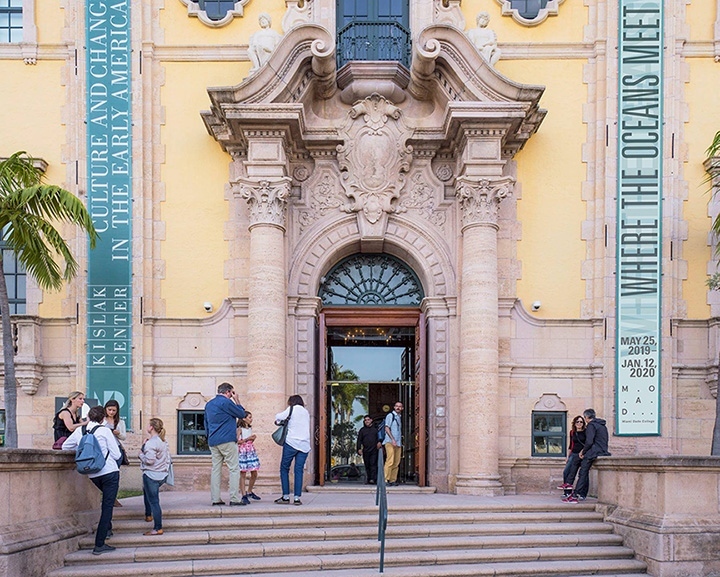History
Miami Dade College’s North Campus—the college’s first, founded in 1960—had an active and highly regarded art program by the mid-1960s, with a dedicated gallery space led by some of the most forward-thinking professors in the visual arts department, including the artists Robert Thiele, Michael Tesh, and Charles Hashim. The gallery quickly became a focal point in the emerging contemporary art scene in Miami, consistently attracting crowds to exhibition openings and other events.
The North Campus faculty also astutely spearheaded efforts to collect contemporary art on a small budget and the College early on acquired works such as the Joseph Beuys multiple Felt Suit, Claes Oldenburg’s soft-sculpture multiple Miniature Drum Set, and works by Frank Stella, Andy Warhol, and a number of Miami artists. Soon, other campuses began to show and collect art, particularly the Kendall Campus, built in 1967, which exhibited the work of prominent faculty artists, including Jill Cannady, Robert Huff, and Sal La Rosa. At the downtown Wolfson Campus, opened in 1970, the artist and curator Sheldon Lurie directed a gallery that showed many cutting-edge artists, including Carlos Alfonzo, Ana Mendieta, and Elena Presser. Later, in the mid-1980s, Robert Sindeler brought the first exhibitions of the Mitchell Wolfson Jr. Collection of Decorative and Propaganda Arts to the Wolfson Campus. The Wolfson Campus also became an important venue for exhibitions and commissions by artists such as Guido Llinás, Leopoldo Maler, Antoni Miralda, and César Trasobares.
In 2005, the Pedro Martin family donated the Freedom Tower to the College. An iconic landmark in the Downtown Miami skyline, adjacent to the expanding Wolfson Campus, the 1925 building was designed by the architectural firm of Schultze & Weaver as the headquarters of The Miami News. During the 1960s, it was used by the federal government to process, document, and provide social and medical services for the incoming wave of Cuban refugees. The Tower earned the designation of National Historic Landmark in 2008.

Under the guidance of MDC President Dr Eduardo J. Padrón, the College formalized its art collecting program in 2005 and consolidated the eight campus galleries to create the Art Gallery System. The AGS staff mounted a range of exhibitions, many curated from the MDC collection, as well as much-anticipated annual faculty and student shows.
In 2012, MDC established the Museum of Art and Design (MOAD), a flagship art space at the Freedom Tower. The Museum took over the care of the MDC collection of approximately 2,300 works of art and oversaw the programming of the campus galleries. The individual MDC campuses retook responsibility for the campus galleries in 2017.
During a major upgrade and renovation of the Museum’s facilities from January 2017 to April 2018, MOAD launched a groundbreaking initiative, Museum Without Boundaries; its first program, the yearlong series Living Together, brought performance art, lectures, readings, and film screenings to several venues in a number of Miami neighborhoods. MOAD reopened to the public on April 6, 2018, with a major exhibition on tour from the Cooper Hewitt, Smithsonian Design Museum in New York, By the People: Designing a Better America, highlighting a national conversation about socially responsible design.
MOAD also oversees the MDC Special Collections, located on the first floor of the Freedom Tower: the Cuban Legacy Gallery, the Kislak Center, and the Exile Experience. While the Freedom Tower is currently closed for necessary renovations, MOAD remains a dynamically evolving institution. MOAD and MDC Special Collections continue to present exhibitions and public and education programs at an array of locations across Miami.
Top Image: Miami Daily News production room, July 26, 1936. Miami News Photograph Collection. HistoryMiami Museum. archives@historymiami.org

